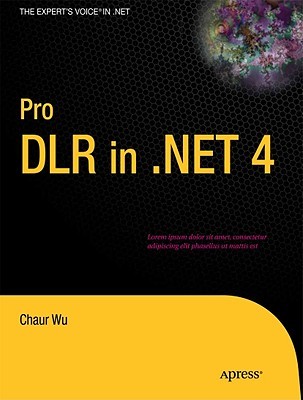
- We will send in 10–14 business days.
- SAVE -10% with code: EXTRA
Reviews
Description
Microsoft's Dynamic Language Runtime (DLR) is a platform for running dynamic languages such as Ruby and Python on an equal footing with compiled languages such as C#. Furthermore, the runtime is the foundation for many useful software design and architecture techniques you can apply as you develop your .NET applications.
Pro DLR in .NET 4 introduces you to the DLR, showing how you can use it to write software that combines dynamic and static languages, letting you choose the right tool for the job. You will learn the core DLR components such as LINQ expressions, call sites, binders, and dynamic objects--and how they work together to achieve language interoperability. You'll see how to mix and match objects and functions from compiled and dynamic languages, so you can write code in the language of your choice while taking advantage of libraries written in other languages. And you'll discover how the various languages interoperate behind the scenes.With the basics out of the way, the book then details the various ways you can leverage the DLR in the design and architecture of your software applications. You'll learn about runtime code generation, which lets you avoid much of the boilerplate code typical in layered business applications. You'll see practical examples of using the DLR to build domain-specific languages, and you'll learn how the DLR helps enable aspect-oriented programming.
EXTRA 10 % discount with code: EXTRA
The promotion ends in 19d.05:57:21
The discount code is valid when purchasing from 10 €. Discounts do not stack.
- Author: Chaur Wu
- Publisher: Apress
- Year: 2010
- Pages: 328
- ISBN-10: 1430230665
- ISBN-13: 9781430230663
- Format: 19 x 23.6 x 1.8 cm, softcover
- Language: English English
Microsoft's Dynamic Language Runtime (DLR) is a platform for running dynamic languages such as Ruby and Python on an equal footing with compiled languages such as C#. Furthermore, the runtime is the foundation for many useful software design and architecture techniques you can apply as you develop your .NET applications.
Pro DLR in .NET 4 introduces you to the DLR, showing how you can use it to write software that combines dynamic and static languages, letting you choose the right tool for the job. You will learn the core DLR components such as LINQ expressions, call sites, binders, and dynamic objects--and how they work together to achieve language interoperability. You'll see how to mix and match objects and functions from compiled and dynamic languages, so you can write code in the language of your choice while taking advantage of libraries written in other languages. And you'll discover how the various languages interoperate behind the scenes.With the basics out of the way, the book then details the various ways you can leverage the DLR in the design and architecture of your software applications. You'll learn about runtime code generation, which lets you avoid much of the boilerplate code typical in layered business applications. You'll see practical examples of using the DLR to build domain-specific languages, and you'll learn how the DLR helps enable aspect-oriented programming.


Reviews